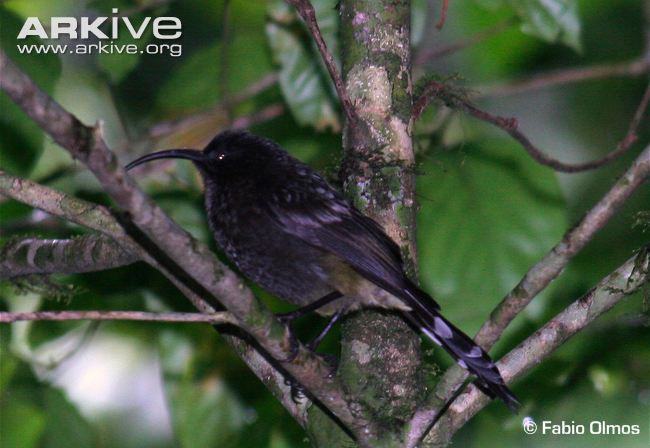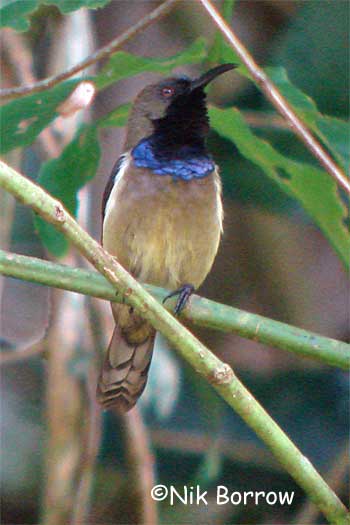
Dreptes thomensis
SUBFAMILY
Nectariniinae
TAXONOMY
Nectarinia thomensis Barbosa du Bocage, 1889, St. Miguel, Sгo
Tomй.
OTHER COMMON NAMES
English: Giant sunbird, Sгo tomй giant sunbird, dusky sгo
tomй sunbird; French: Souimanga de sгo tomй; German:
Riesennektarvogel; Spanish: Nectarina de Santo Tomй.
PHYSICAL CHARACTERISTICS
Male 7.9–9 in (20–23 cm), female 7.1–7.5 in (18–19 cm); male
0.92 oz (26 g), female 0.63–0.67 oz (18.0–18.9 g). Largest of
the sunbirds, with long bill and tail feathers. Dark purplish upperparts
with brown belly and breast. White-tipped tail.
DISTRIBUTION
Sгo Tomй.
HABITAT
Montane forest, secondary forest, scrub along streams, and cultivations.
BEHAVIOR
Usually occurs singly or in pairs, but up to seven birds may congregate
at flowers. Constantly moves from plant to plant, and
sometimes feeds on bark of trees like a treecreeper (Certhia sp.).
FEEDING ECOLOGY AND DIET
Gleans leaves for insects, hovers beneath leaves to feed, probes
bark and flowers. Food consists of insects, nectar, and fruit pulp.
REPRODUCTIVE BIOLOGY
Territorial. Possibly polygynous. Two long white eggs with red
spots, laid September through January in nest suspended from
end of branch. Nest made of moss and plant fibers with small
porch and long trailing “beard” of plant fibers below base.
CONSERVATION STATUS
Vulnerable. Restricted to forests of Sгo Tomй and threatened
by forest clearances.
SIGNIFICANCE TO HUMANS
None known.
Other popular Animals
Photo Gallery of - Sao Tome sunbird




 Animalia Life
Animalia Life